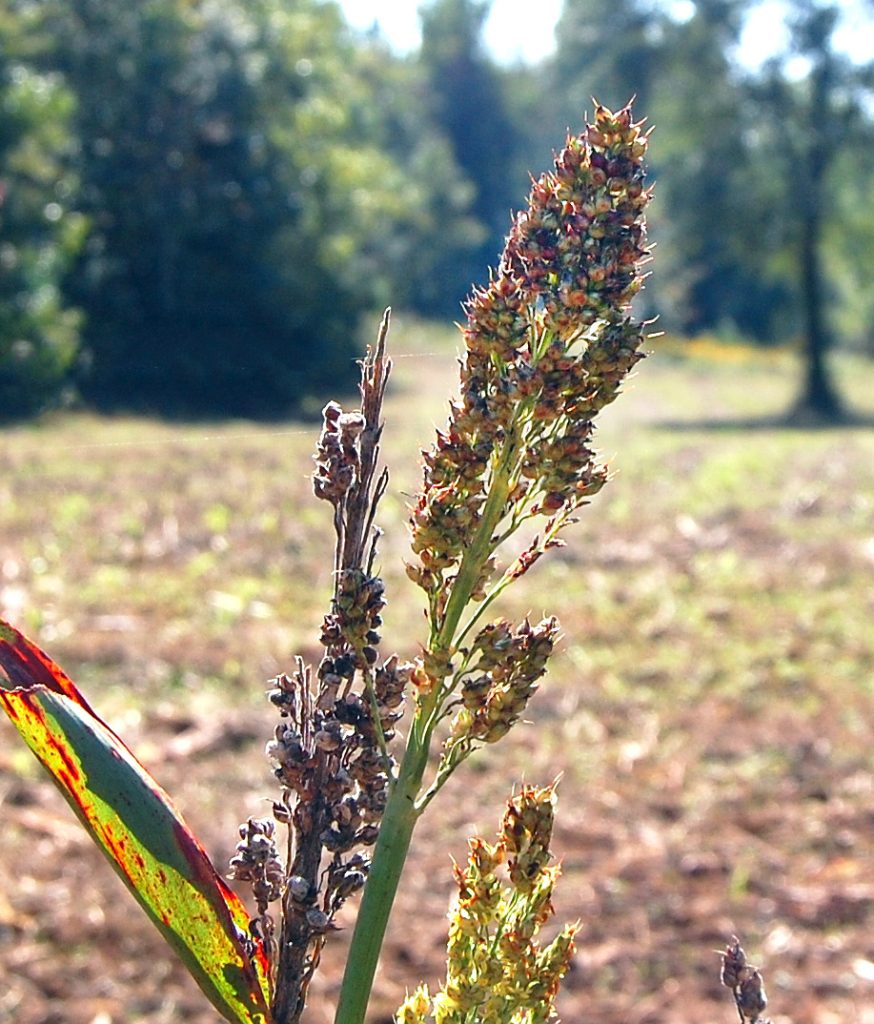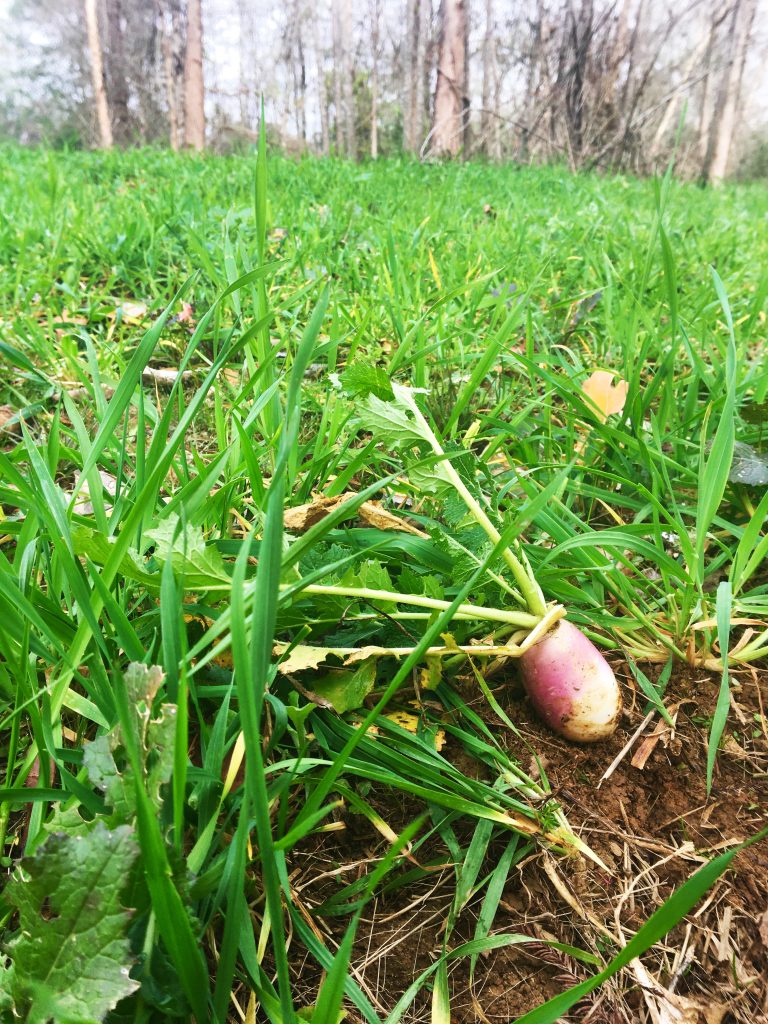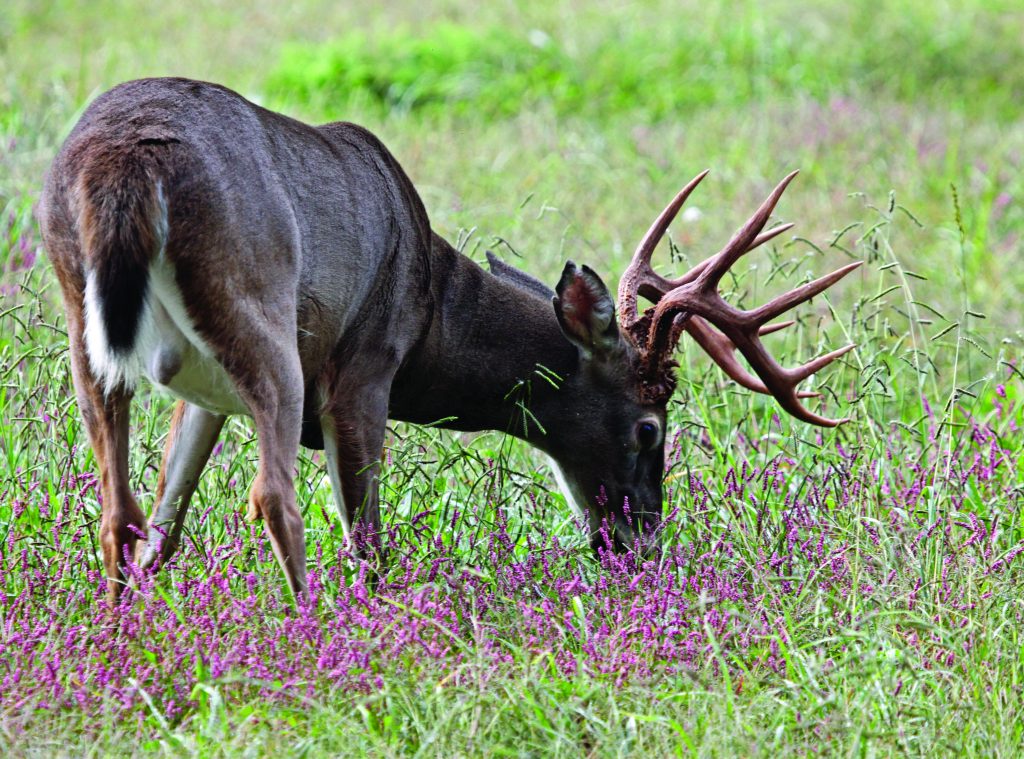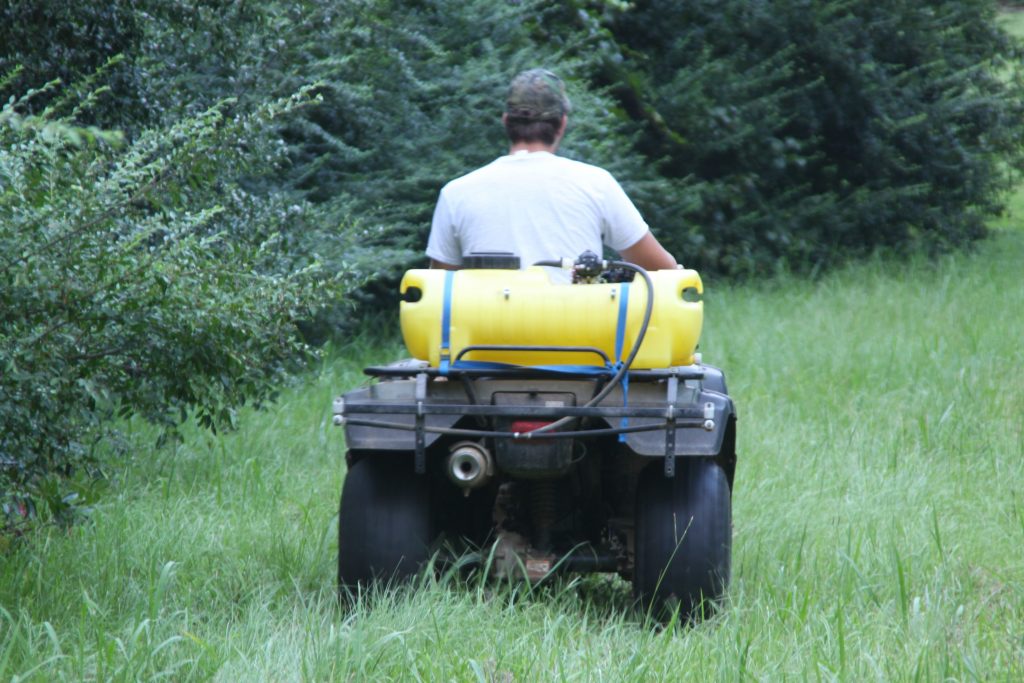Determining the Best Spring and Summer Food Plots for Deer
All hunters want to take older-age-class bucks, and the formula to be able to take bucks with big racks and heavy body weights is simple. All you have to do is provide everything that a mature buck wants or needs on the land you hunt. Even on small properties, you can hold older-age- class bucks there, if you provide plenty of food. The hunters who supply food, shelter and water can hold more deer on their lands than the hunters who don’t plant spring and summer food plots for deer.
To learn why spring and summer plantings for green fields are so important, and what benefits are available from planting them, “Great Days Outdoors” talked with David Brown, sales manager for Southern Seed & Feed that was established in 1983 and today has products available in feed stores throughout Mississippi and Alabama and in several Alabama Farmers Co-Op stores.
“During the spring and summer in the South, often droughts occur that burn-up many of the crops that produce protein for deer, turkeys, quail and doves on your lands.” Brown explains. “Spring and summer plantings provide the protein that these game animals need during this most-stressful time of the year. By planting in the spring, you make sure that when a drought hits, the deer and turkeys still have plenty of food to get them through before your fall plantings green-up.”

There’s still plenty of highly-nutritious plants in Southern Buck Spring and Summer Mix 138 days after planting, as pictured.
The seeds that Brown recommends for a quality spring and summer wildlife planting include brown top millet, iron and clay peas, wild game sorghum, Stonewall soybeans and peredovik sunflowers (black oil sunflowers) that doves, quail and turkeys enjoy. Deer also browse on these 4-5 foot tall sunflowers that scavenge nutrients from deep in the soil to make them available to shallower root systems.
“All of these ingredients are in our Southern Buck Spring and Summer Mix,” Brown reports. “This mixture provides protein for deer during the drought times of the summer.”
When asked about when to plant the Southern Buck Spring and Summer Mix, Brown says, “You can plant this any time after the danger of the last frost has passed. Since our company offers a wide variety of seeds, different crops within the blend will mature at various times of the spring and summer. In the summer in late June, July and August, the protein level of most crops begins to drop-off. However, this mixture yields high-protein plants that benefit all your wildlife and help to hold them on your property.”

“Southern Buck Spring and Summer Mix provides plenty of protein for deer during the drought times of the hot summer,” David Brown says.
Another advantage to planting this crop at this time of the year is that you can begin your trail- camera surveys, watch your bucks’ antlers grow and see what kind of fawn crop you have on your land. By having these spring and summer plantings, you’ll also have a better chance of holding the wildlife you want to hunt in the fall until that time and not have those deer and turkeys leave your property for greener pastures somewhere else.
Fall Food Plots That Produce Through Spring
“Once the deer have consumed this crop of Southern Buck Spring and Summer Mix, you’ll need to start some supplemental feeding and get the fall crop in the ground to provide plenty of wildlife food for the deer and turkeys before bow season,” Brown says. “We recommend Southern Buck Rack Zone and Southern Buck Super Buck for fall plantings that feed through the following spring.”

One of the early fall seed groups is turnips that are especially popular with deer that not only can eat the tops but also the roots.
Southern Seed & Feed has developed its different types of wildlife plantings specifically for the South’s temperatures, soil types and availability of rain. A soil test can help you choose which seed blends are best for your green field plantings. Southern Buck Rack Zone, containing wheat, forage oats, Austrian winter peas, Balansa, arrowleaf, Berseem and crimson clovers, rye and Appin turnips, provides early forage for deer and lasts for 10 months through the fall, winter and spring.
Southern Buck Super Buck, containing wheat, forage oats, Austrian winter peas, trophy rape, Balansa and crimson clovers, Daikon radishes and turnips, provides early forage too and will enhance your deer herd’s health for 8 months – providing nutrition through the spring.
Using Liquid Fertilizer
Most wildlife managers understand that, in order to effectively grow the best spring and summer food plots for deer, your plants require three major nutrients; Nitrogen, Phosphorus and Potassium. These are the basic nutrients in all fertilizers. Overall plant health translates to providing quality, nutritious forage for all types of wildlife.
Chris Grantham of Alabama Liquid Fertilizer explains the pros and cons of using liquid fertilizer versus granular fertilizers.
According to Grantham, one reason that liquid fertilizer like Clark’s Plot Nutrients is more efficient is because liquid fertilizer is applied as a foliar. Since it is directly applied to the foliage, the plant can instantly begin absorbing and using the nutrients of the fertilizer. There is no waiting on soil moisture or rain to activate the fertilizer.
In granular fertilizer applications the nutrients have to “melt” into the soil before the plant can utilize the fertilizer. In sandy soil Nitrogen can move six to nine inches after a rain which means it is possible the plant roots may never receive any of the benefits of Nitrogen.
There is a time lag for the granular nutrients to melt into the soil before the plant roots can receive them. During this lag time wildlife like deer, turkey, quail and others are consuming a less than nutritious plant.

The absorption rate of liquid fertilizer will help you create high quality summer food plots more quickly, ensuring that deer and other wildlife are consuming nutrient rich food for a longer period of time.
In addition, granular fertilizers are not consistent with nutrients in each granule. Plant roots can steer away from granular fertilizers that are high in Nitrogen and Phosphorous. Granular fertilizers are soil and pH dependent for the plant roots to utilize the nutrients. With a low soil pH level, the plant will not get all the benefits of the granular fertilizer.
On the other hand, liquid fertilizers have the same amount of nutrients in each drop. Plants can absorb liquid fertilizers more efficiently. Leaves, stems, blooms and fruit can intake the liquid much faster than granular. With liquid fertilizer the plant begins utilizing the nutrients right away. As a result, deer munching on food plots fertilized with Clark’s Plots Nutrients begin benefitting from the enriched plants. Phosphorus is essential for rack growth in bucks.
Grantham pointed out that there are two major factors in why liquid fertilizer is a wise choice, when it comes to summer food plots for deer. One, it makes the plants more palatable to wildlife. This means that the plants taste better. The second reason is the liquid fertilizer acts like a mineral lick. The product also provides calcium which is beneficial to deer and turkey and other wildlife.
Calcium is an essential mineral to help in growing racks on bucks. Does also benefit from healthy development of fawns resulting in better fawn survival.
Another consideration is that liquid fertilizers are less expensive than the granular form. Grantham says his product is around $20 per gallon. The amount of liquid fertilizer required is around 2 – 2 ½ gallons per acre. For a one-acre food plot the cost would be around $40 bucks.

ATV sprayers make simple work of applying liquid fertilizer to summer food plots.
Application is much easier with liquid fertilizers. An ATV style sprayer can be used to effectively spray a food plot in a short time. The liquid is fertilizer diluted with water. Users will need to determine the amount of liquid their sprayer is emitting.
Liquid fertilizer can be applied when the plants are around three to six inches high. An average application of liquid fertilizers will last around two to three months. Also, depending on the plant species, liquid fertilizer can be used year-round.
Grantham cautions that before you apply liquid fertilizer be sure wash out and clean the spray tank if it has been used with herbicides like Round-Up. Flush out pump, hoses and spray nozzles. Killing all of your plants would, definitely, not make for the best spring and summer food plots for deer.
